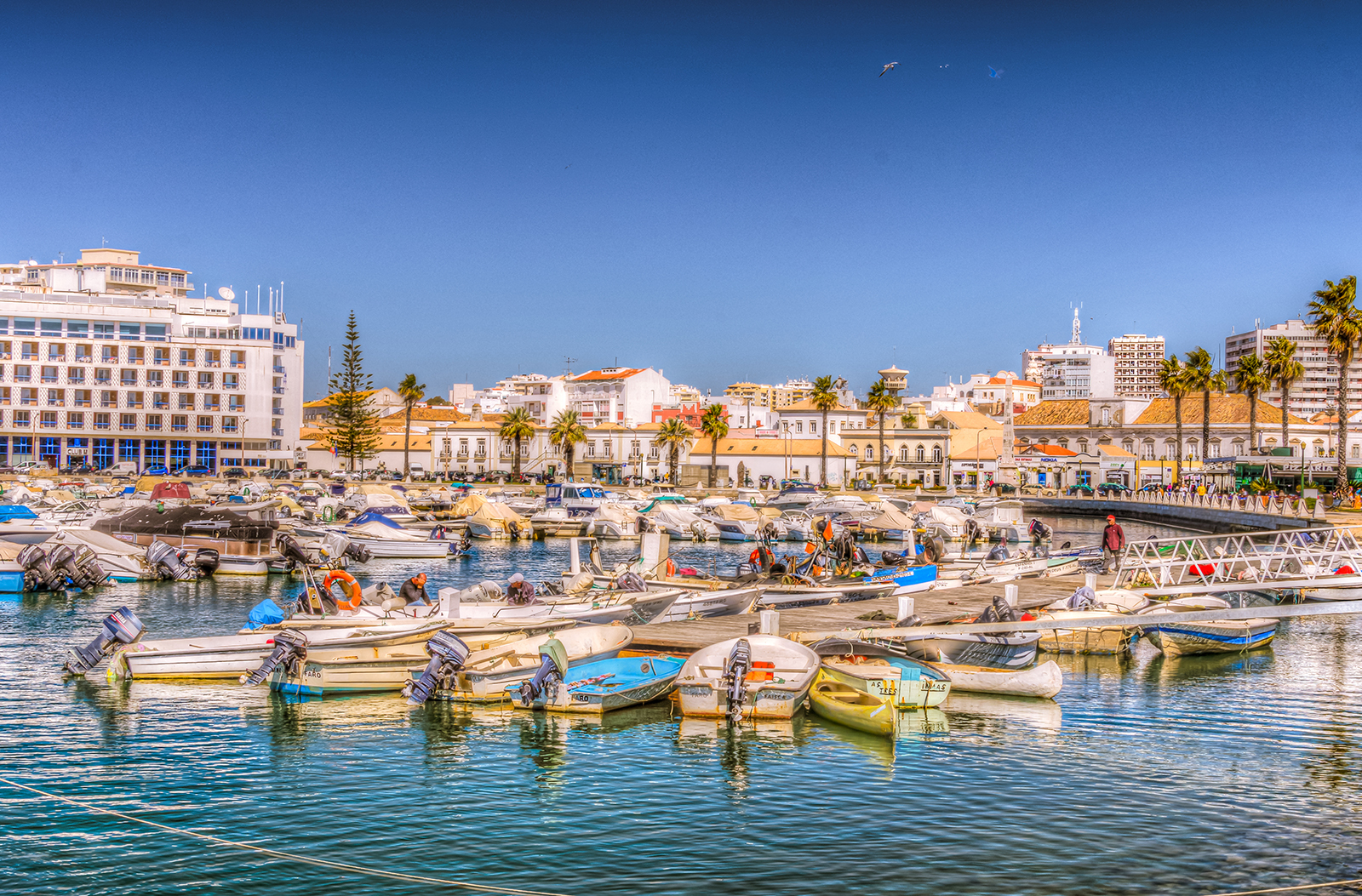
Located roughly at the center of the region, Faro is a great base to explore all of the Algarve, with good public transportation to the major towns. Ferries also connect it to the Ria Formosa Natural Park, with its lagoons, mud flats, and barrier islands.
Like all of southern Portugal, it was devastated by a major earthquake in 1755 but has the largest concentration of monuments and historical sights in the Algarve. That makes it the perfect destination for those who like to combine culture and the beach. Even if all you want is to relax at a resort elsewhere in the Algarve, at least one day in Faro is the perfect introduction to the region.
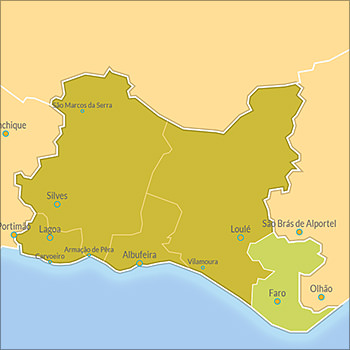
Faro is a historic and culturally rich city that boasts a variety of fascinating tourist attractions.
Sadly, Faro is often overlooked, considered only for its airport, but if you spend time in Faro, you will discover a charming Portuguese city.
Faro makes an enjoyable, if slightly alternative, holiday destination. The city is ideal if you want an authentic Portuguese experience, in preference to a beach holiday.
Faro offers history and culture, along with a varied selection of cafes, restaurants, and bars. Being a major city, there is decent nightlife, and this tends to be aimed at Portuguese patrons, rather than foreign tourists. By day Faro has an unhurried and calm ambience, but by night there is a surprising buzzing and social nightlife.
First settled by the Phoenicians, Faro boomed as the Roman city of Ossonoba, was conquered by the Visigoths in 418 AD, and became a Moorish city in the 8th century. It was made part of the Kingdom of Portugal in 1249, and King Afonso III built a protective wall around it. The entire city was what is now the Old Town, within the preserved walls. Faro was a major cultural center by the 1400s, printing Portugal’s first books. In 1597, the Earl of Essex was heading back to England from Spain, when he stopped in Faro and plundered it. Many of its treasures are now in English museums, libraries (mainly at Oxford University), and palaces.
The city recovered but was almost completely destroyed in an earthquake in 1755. Much of the Old Town survived, but everything else was rebuilt. It became the capital of Algarve in 1834.
When to visit Faro?
It has a wonderful Mediterranean climate, with mild springs and autumns, and warm summers. There are many rainy days between November and March, but this is one of the driest regions in Europe and with the most sunshine hours. The busiest month is August, but Faro is never as crowded as other Algarvian towns. Late June, July, and early September are the best times to go. However, it’s only warm enough for sunbathing at the beach between April and October.
How many days in Faro?
You can see the Old Town and the historic attractions in just one day and should add a second day for one of the islands. A third day, for a second island, is ideal. You can also choose to stay in Faro and take day trips to other towns in Algarve.
Where to go for a trip from Faro?
If you like historic cities with beaches, head to Tavira to the east. If you prefer resort towns, choose Albufeira to the west. Further west is the stunning coastline of Lagos and Europe’s southwestern tip, Sagres, which was once thought to be “the end of the world.”
From Faro, it is possible to take day trips to Olhão, Tavira, Loulé, Albufeira, and Vilamoura, and longer train journeys connect to Silves and Lagos.
An alternative day trip is to the pretty village of Estoi. Found in Estoi is the pink Estoi Palace, the finest example of Rococo architecture in the Algarve, while just outside of the village are the Milre Roman ruins, of a once-grand villa.
What to see and do in Faro
• Old Town
While modern Faro is the result of 20th-century urban sprawl, the Old Town is like a pretty walled village with well-preserved centuries-old monuments. That includes the cathedral and a former convent that’s now the city’s main museum. Its main gateway is a neoclassical arch (the “Arco da Vila”) erected after an earthquake in 1755 that destroyed most of southern Portugal. From that gate, the cobbled streets lead to the main square lined with orange trees and faced by the cathedral. In the surroundings are outdoor cafés and restaurants, and a number of elegant buildings, like the former Bishop’s Palace and the Town Hall.
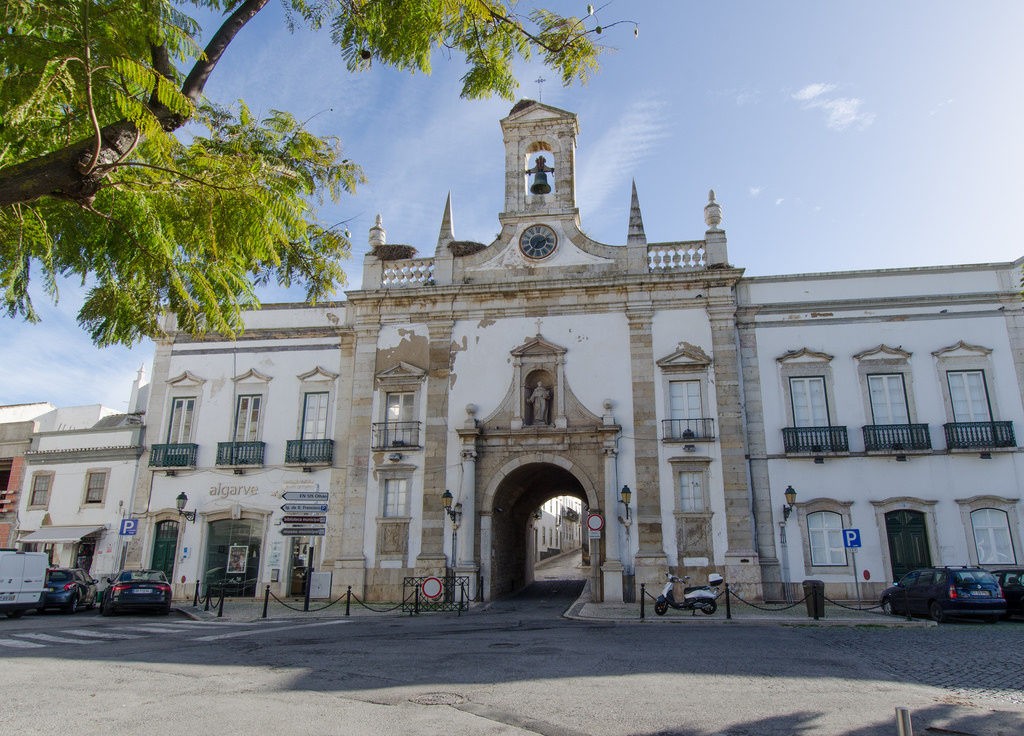
• Faro Cathedral
The Cathedral dates back to 1251 and is one of the finest monuments in Algarve. It features a series of rich chapels in Gothic, Renaissance, and Baroque styles, and a terrace by the bell tower from where you have the best view over the city and the Ria Formosa Natural Park.
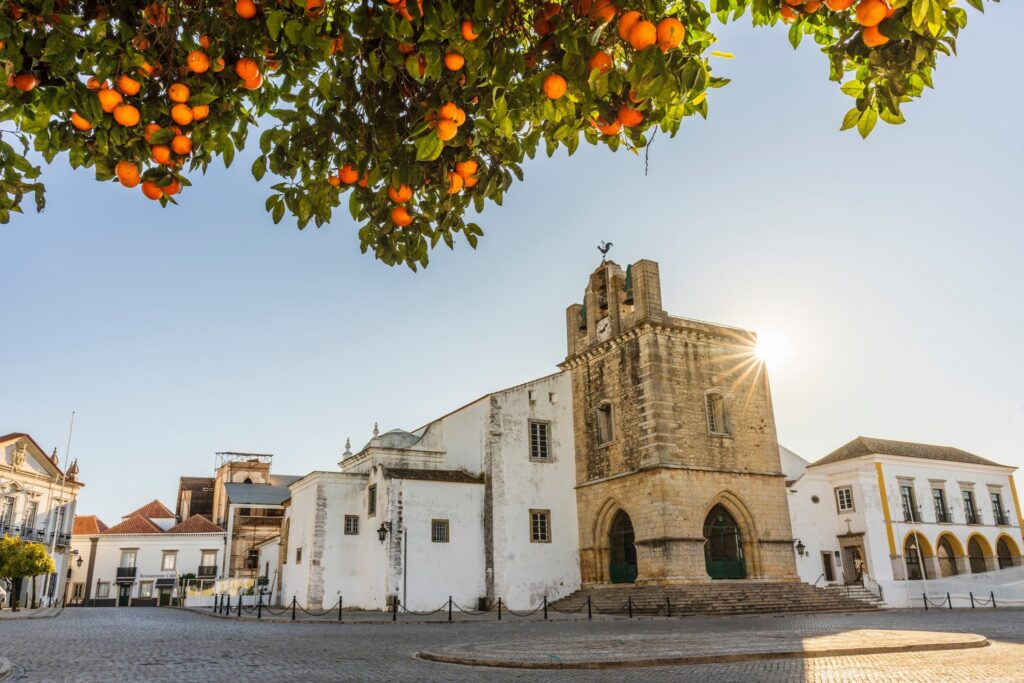
• Carmo Church
Precious Brazilian gold covers much of the rich interior of this church, but it’s the macabre Chapel of Bones that gets all the attention and brings so many visitors here. Covered with the skulls and bones of over a thousand monks, the chapel was added in 1816 to the church dating from 1719. Fortunately, much of the monument escaped the destruction of the 1755 earthquake, and both its twin-towered façade and its interior are perfect examples of Portuguese baroque.
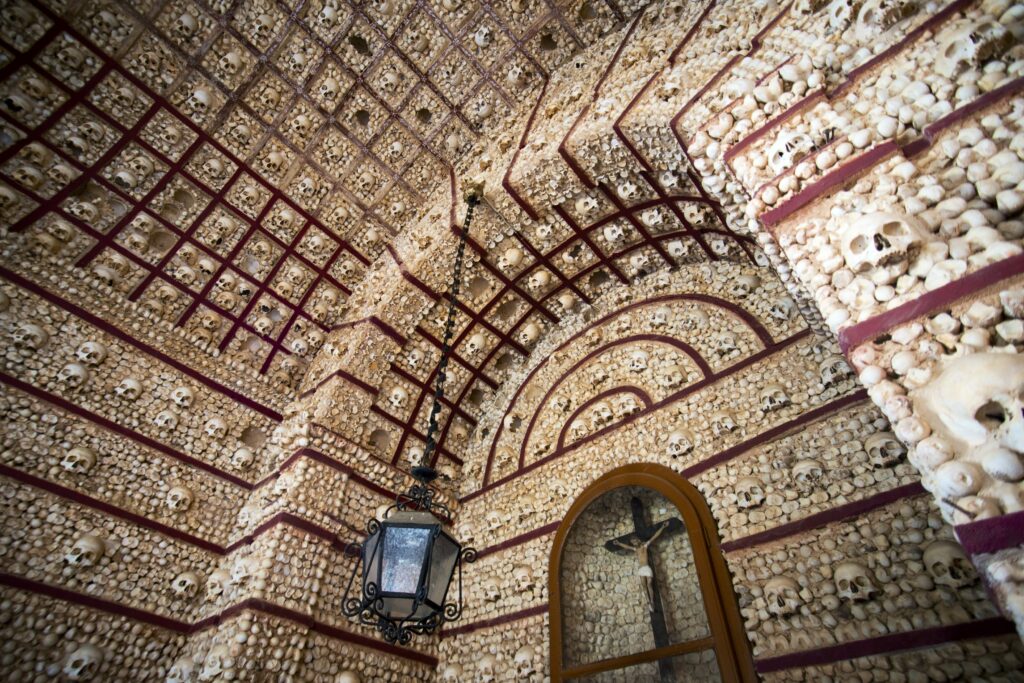
• Faro Municipal Museum
The 16th-century convent with the most beautiful cloisters in the Algarve is the site for the region’s richest museum. It displays a huge Roman mosaic, sculptures of emperors found in the Roman ruins of Milreu, and a number of artifacts dating from prehistoric to modern times.

• São Pedro Church
This 16th-century church was another victim of the 1755 earthquake but was rebuilt, in the baroque style of the late 18th century. The exterior was kept plain but the interior was embellished with a profusion of gold and superb blue-and-white tile panels. Before entering, notice the stork nests on the roof or bell tower.

• Ilha de Faro
Actually, it’s not an island but a peninsula, and unlike the neighboring islands of the Ria Formosa Natural Park, it can be reached by bus or car. It’s the most popular beach in Faro and can be quite crowded in the summer. To approach it by walking, follow a boardwalk to the east.
It’s also the only beach in Faro with accommodation and has a number of cafés and restaurants just steps from the sand. On the northern side, you have a view of Faro and the calmer waters of a lagoon, while the southern side offers waves for surfing.

• Ilha Deserta
This deserted island is an experience that you won’t want to miss when in Faro. It’s accessed by ferry or speedboat and has just one solar-powered restaurant, a lighthouse, and a few sheds by the pier. It’s a stunning and pristine wonder, with a 2 km-long boardwalk over dunes leading to a long beach. The western end is officially naturist, but in the east, it has wicker parasols and loungers for rent in the summer.

• Ilha do Farol
Farol (literally “Lighthouse”) is a tiny fishing community on one of the barrier islands by Faro and it has a wonderful beach that hasn’t yet been discovered by most tourists. It’s named after a tall 19th-century lighthouse that stands by the beach. Getting there by ferry offers you the opportunity to admire the Faro skyline and the lagoons of the Ria Formosa Natural Park, inhabited by a variety of wildlife. When you arrive, walk straight through the picturesque fishing village to reach the beach. It can be crowded on the western end by the lighthouse, but keep walking east and you find plenty of space and calm.
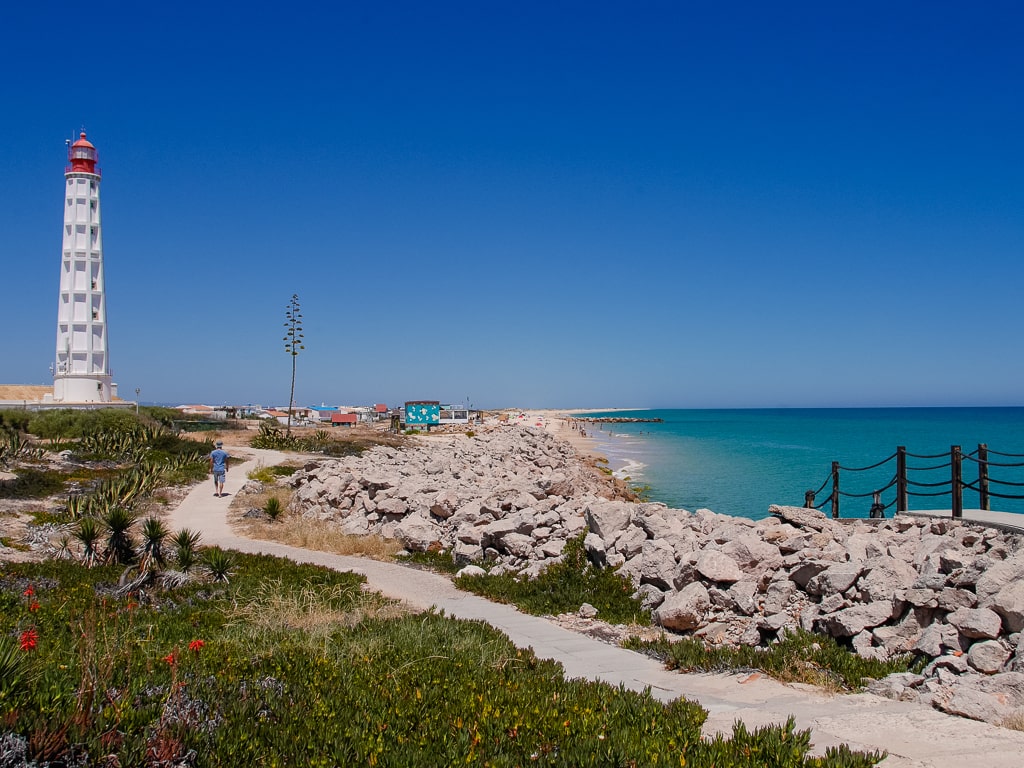
Other interesting attractions in Faro
• Igreja de São Francisco
Considered a fine example of Portuguese baroque architecture, mixing rich golden ornamentation and tile panels, this church also includes paintings brought from Rome in 1792. The main attraction, however, is the extraordinary tilework covering the vaulted ceiling and the walls of the chancel.
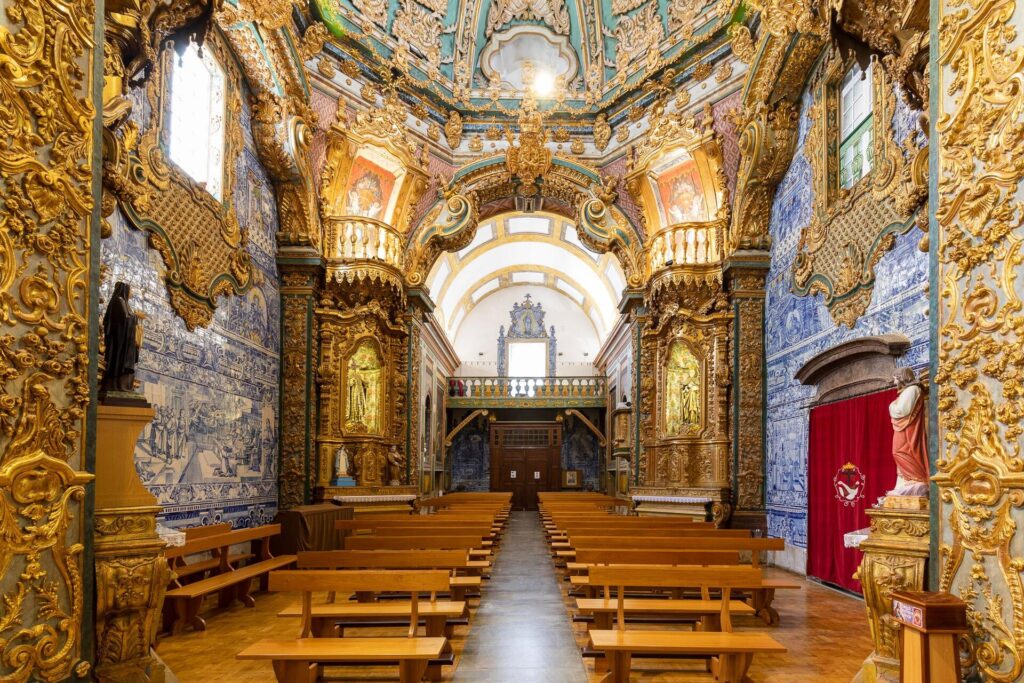
• Museu Regional do Algarve
Do you wonder what the Algarve looked like before tourism in the mid-20th century? Head to this museum with a collection of local art and everyday items. It recreates the typical homes, displays costumes, and shows the old Algarvian way of life through photographs and paintings.

• Igreja do Convento de Santo António dos Capuchos
You’ll most likely find this church closed, but it is worth a detour on a visit to Carmo Church nearby. Completed in 1622, it’s part of a convent that was dedicated to St. Anthony and inaugurated on the saint’s day. In the 19th century, the convent was taken over by the National Guard, which occupies it to this day and is therefore not open to the public. The church housed Faro’s archaeological museum (now the Municipal Museum) between 1913 and 1971 before the collection moved to its current location. And on its bell towers, you will see stork nests.

• Ermida de Nossa Senhora do Pé da Cruz
If you’re lucky to find this 17th-century chapel open, peek inside for its lovely decoration of gilded wood carvings and paintings illustrating scenes from the Old Testament. The original building was erected in 1644 but was almost completely destroyed by an earthquake in 1755. The whitewashed baroque façade and much of the interior were only completed in 1861. At the rear is an 18th-century addition — a crucifix at the center of a tiled arch. The top of the cupola is another favorite spot for storks to build their nests.

• Igreja da Misericórdia
The 16th-century church faced by the neoclassical arch that leads to the Old Town houses a small museum of sacred art but the main attractions are outside — the curious stork nests on its roof and a large tile panel commemorating Christopher Columbus’ stop in Faro in 1493, and recalling the explorer’s different voyages between the Iberian Peninsula and the “New World.”
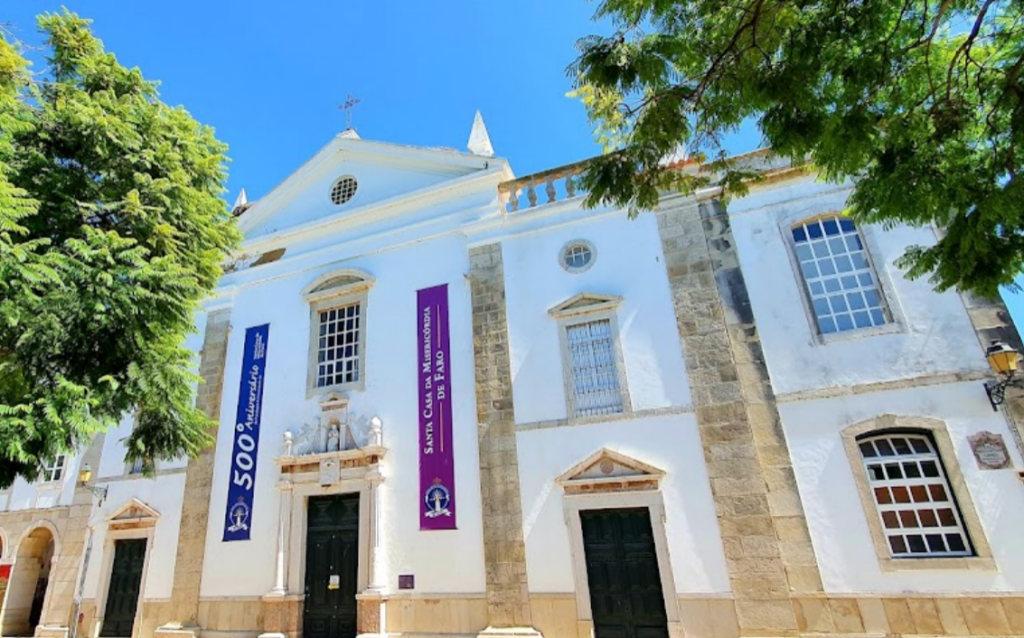
A day trip to Faro
Faro is the best day trip in the central Algarve region.
The first half of your day could be dedicated to exploring the walled Old Town, and the second half visiting the modern area of Faro, which includes the Capela dos Ossos (Bone Chapel).
Boat tours of the Parque Natural da Ria Formosa are typically full-day activities, but there are shorter trips to the Ilha Deserta if you wish to see the nature park on your day trip.
Being the largest city of the Algarve, Faro has excellent public transport from the surrounding region. If you have a car, there is a large car park to the southeast of the city.
There are many excellent tours and activities in Faro. The Parque Natural da Ria Formosa and the Ilha Deserta are often the focus of these tours, as they can only be reached by boat.
Faro has no beaches that are within walking distance of the city center, and a bus (to the Praia de Faro) or ferry (Praia Da Ilha Deserta) must be caught. So, it is not a destination for a beach-focused holiday.
This city is a good base from which to explore the Algarve by public transport.
If you are considering a holiday to Faro, you should be aware that this is a major residential city and not some beautified or manicured resort town. Some sections of the city are dilapidated (but are perfectly safe), and unfortunately, are on the main bus route into the city, which gives a bad first impression of Faro.
But this opinion always changes when the historic center and harbor are discovered!
Accommodation in Faro
Generally, most tourists book their accommodation within 300 m of the Jardim Manuel Bivar Square and the Port of Faro. Faro is a compact city, and this area covers the main tourist sights, the bus and train stations, and popular restaurants.
As for hotels; the Hotel Faro and Eva Senses Hotel are both highly regarded, have roof terraces, and are centrally located. A recommended cheaper alternative is the Stay Hotel Faro Centro. If you need a hotel close to Faro airport, consider the Hotel 3k.
Faro City should not be considered a beach holiday destination. The beaches of Faro are found on the southern side of the three sandbar islands (Ilha de Faro, Ilha Deserta, and the Ilha da Culatra), and cannot be walked to.
There is a direct bus (route 16) from the Próximo Bus Station in Faro to the Faro beach; this route also serves the airport.
Ilha Deserta, as its name suggests, is an uninhabited sandy island that can only be accessed by boat. The southern part of the island features a beach called Praia Da Ilha Deserta, which stretches for over 6km and is known for its pristine, unspoiled sands. Midway along the beach is Cabo de Santa Maria, the southernmost point of Portugal.
A wooden boardwalk runs along the northern side of the island, passing through a sparse vegetation of beach scrub. Despite its beauty and seclusion, the Ilha Deserta is not the most convenient destination for a beach trip, and many visitors opt for the more accessible Praia de Faro instead.
Faro airport is the main international airport of southern Portugal and is situated 7 km southwest of the city. The bus and train stations are located in the center of Faro city, and departing from here are regional services covering the whole of the Algarve, along with routes to Lisbon and northern Portugal.
Useful public transport websites include:
- Comboios de Portugal (trains) – www.cp.pt
- Regional buses – eva-bus.com
- Rede Expressos (intercity buses) – www.rede-expressos.pt
Unfortunately, none of these public transport services connects directly to the airport. Therefore, if you wish to head to your holiday destination using public transport, you will have to travel into Faro city first.
There is very limited public transport from Faro Airport to Faro center. There is a single bus service that departs every 30-40 minutes between 6 a.m. and midnight. This bus (route 16) terminates at the Proximo bus station and is next to the intercity bus station or 200m from the train station.
A taxi from the airport to Faro is a more convenient and faster option. Uber operates in the Algarve, but there can be high demand during the summer months.








